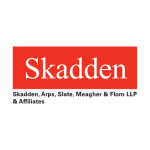Section 1 – PRIVATE EQUITY LANDSCAPE
1.1 How would you describe the current state of private equity activity in your jurisdiction, including the most common forms of private equity transactions?
The volume of Private Equity (PE) transactions is solid, due to quite sizeable transactions in the first four months, including the acquisition of GEA Heat Exchangers by Triton and of Mauser by Clayton Dubilier & Rice. There appears to be a lack of attractive targets in the small and mid-cap markets.
Low interest rates, banks' strong appetite to finance transactions and the lack of investment opportunities, have caused prices to remain relatively high. Initial public offerings (IPOs) as exit routes are not as important as trade sales.
1.2 Are there any factors that make your jurisdiction attractive to private equity investment at this time or that will spur private equity investment in the near term?
After the financial crisis, Germany has proven to be an economic stronghold within continental Europe. Many companies, particularly small and medium-sized enterprises (SMEs), are market or technology leaders in their industry.
For years the German Mittelstand (SME) has been expected to provide a wide range of attractive investment opportunities. So far, this has not materialised, but it is only a matter of time. Doing business with the Mittelstand may require flexibility and creativity concerning investment structure and shareholder relations.
The role of PE in Germany is still under-represented in German M&A compared, for example, to the UK market.
Section 2 – SIGNIFICANT LEGAL DEVELOPMENTS
2.1 Have there been any recent regulatory developments, including tax developments, in your jurisdiction affecting the raising, formation, governing terms or operation of private equity investment funds or investments made by funds?
On July 22 2013, the Capital Investment Act (Kapitalanlagegesetzbuch) took effect, which implements the EU Alternative Investment Fund Managers Directive. It protects investors by stipulating uniform regulatory standards, and provides for comprehensive regulation and supervision by the Federal Financial Supervisory Authority (BaFin). The German legislator is discussing a bill, which would provide adjustments to the wording of the regulation; PE sponsors hope that access to capital will be facilitated for so-called semi-professional investors.
2.2 Have anti-corruption legislation and/or environmental, social and governance principles affected the approach of private equity investors and/or transaction terms?
Compliance sensitivity has increased, changing the approach of many investors. Germany is not a high-risk jurisdiction for compliance issues, yet most German targets operate in various countries. If relevant indications exist or targets involve businesses in jurisdictions that are considered to involve increased risks, PE investors tend to address these through a compliance due diligence.
Besides due diligence issues, PE investors will request that sellers grant compliance warranties in transaction documents.
2.3 Could a private equity sponsor (and/or its directors, officers or employees) be exposed to liability for a portfolio company's actions or omissions in your jurisdiction and if so, on what legal grounds?
PE sponsors aren't generally held liable for a portfolio company's actions or omissions. The recent ruling by the EU commission involving a PE sponsor that would be held liable for breaches of antitrust laws by one of its portfolio companies, appears to be confined to antitrust regulations. To date, no legal authority has alleged that these rules should also be applicable to other scenarios.
Liability of a PE fund as shareholder is possible, but only if very specific requirements are satisfied. These include respective actions by the investor, for instance the use of shareholder rights to the detriment of the portfolio company.
Non-executive board members designated by sponsors may be held liable if they breach their fiduciary duties.
Section 3 – FUND FORMATION AND STRUCTURE
3.1 Please describe the typical legal structure used to establish private equity funds, including the primary securities law considerations in private equity fund formation.
PE funds will typically take the form of limited partnerships (Kommanditgesellschaft) as they are tax-efficient and, from a corporate law perspective, flexible vehicles.
Principally, PE investment funds and their managers fall within the scope of the German Capital Investment Act. A fund manager must therefore apply to BaFin to be authorised to manage the fund in Germany. If the fund is marketed in other EU member states the manager should notify BaFin, which will notify the competent non-domestic authorities. This applies mutatis mutandis. If a non-German fund manager with authorisation in another EU member state, wishes to market its fund in Germany, the fund's supervisory authority will provide BaFin with the relevant permission. Managers that do not qualify as EU alternative investment fund managers may not rely on the passporting mechanism described above.
3.2 How are carried interest arrangements typically structured and is there a prevailing methodology for calculating the sponsor's carried interest?
Typically, carried interest arrangements are structured through a limited partnership with managers or their vehicles becoming limited partners. That partnership is in turn a special limited partner in the fund limited partnership. Carried interest is usually calculated on a whole-of-fund basis, under which the carried interest entitlement only arises after investors have received a return of their drawn-down capital, plus any preferred return accrued.
3.3 Are fund investors typically subject to claw back or a return of distributions to cover their respective allocations of fund liabilities, such as indemnification payments?
As marketing today is globalised, investors expect essentially the same regulations in German funds as they would find in other jurisdictions. The statements made with respect to the UK generally apply as well.
Section 4 – STRUCTURE OF ACQUISITION VEHICLE
4.1 What type of entity is typically used as the acquisition vehicle for private equity investments in your jurisdiction? What are the key factors that determine the choice of entity?
Most acquisitions are executed through a German limited liability company (GmbH), which is considerably flexible concerning corporate governance.
The legal regime governing stock corporations (AG) is much stricter and essentially designed for listed companies. Partnerships are rarely found in acquisition structures, and use of a German partnership may result in adverse tax effects.
4.2 Does the structure of the acquisition vehicle vary depending on the nature of the investors in the private equity purchaser's fund?
The structure of the acquisition vehicle should be relatively independent from the nature of the investors. In general, the structure above the acquisition vehicle should be influenced by it (see 5.1).
4.3 Describe how the choice of acquisition vehicle affects the nature of the incentive equity compensation that can be offered to management.
The choice of the acquisition vehicle should not affect the nature of the incentive equity compensation. Management normally expects an actual (as opposed to a virtual) participation in the target, in most cases bundled in an entity that will be tax transparent.
Section 5 – ACQUISITION STRUCTURE
5.1 What are the typical structures used by private equity sponsors to acquire portfolio companies in your jurisdiction? What are the major considerations that govern this decision?
Acquisition structures are mainly driven by tax aspects. Typically, PE funds aim to achieve exit proceeds that are subject to a preferred tax rate and a deductibility of interest charged on bank and shareholder financing to the greatest extent possible. Important drivers are often the creation of a fiscal unity between target group companies (allowing for a set-off of losses incurred in one company against profits in another).
Often the acquisition company will be held by a holding company, which may be domiciled outside of Germany (double-tier structure). These structures may avoid the shares held by the PE investor becoming part of the security package granted to financing banks. Management may invest in the acquisition or the holding company depending on tax considerations.
5.2 What are the major issues that drive deal timing in your jurisdiction, including disclosure obligations financing and regulatory approval requirements?
Most transactions are subject to antitrust clearance, and therefore, will envisage a deferred closing. The parties must agree on deal terms that address this.
Sellers expect that by signing, the purchaser is entering into binding financing agreements which are subject only to customary conditions precedent. Agreements on collateral will then normally be negotiated with the banks after signing.
If the target company is listed, the purchaser has to disclose its intent to launch a tender offer. Disclosure is principally not required unless the contemplated transaction is expected to have a material impact on the share price of the seller.
Section 6 – GOVERNANCE
6.1 Are there any legal requirements in your jurisdiction that would prevent or otherwise affect the ability of a private equity acquirer to designate members of the board and/or management of its portfolio companies? Are there any legal risks for the private equity acquirer in designating such members?
No, PE investors usually take a passive investor position, which is not changed through the designation of board members. However, this should not be the basis for exposure of the PE sponsor regarding liabilities of the portfolio company.
6.2 Are veto rights over major corporate actions (such as dissolution and winding up, merger or consolidation, significant acquisitions or dispositions, incurrence of material indebtedness, or changing the business of the company) typical rights held by private equity acquirers? Are there any limitations or prohibitions on such rights?
Veto rights only become relevant if the acquirer does not control the target. PE acquirers typically have veto rights either as a matter of law given their shareholding percentage or on a contractual basis. The rights conferred upon the PE investor are then subject to either contractual rights conceded to the minority or mandatory statutory minority rights, which may not even be waived by the protected party. Such minority rights may stipulate that special majorities are required for certain resolutions or provide for rights to participate in shareholder meetings or to inspect accounts. The scope of statutory minority rights may differ subject to the relevant type of corporate entity involved.
6.3 Do private equity funds or any board members they appoint, have any fiduciary or other duties to minority equity-holders or other stakeholders of a portfolio company? Eg are there any prohibitions against acquisitions of, or investments in, competing or complimentary businesses?
PE funds as shareholders owe fiduciary duties to the company in which they are invested, and to a limited extent, other shareholders, subject to specific definitions by the courts. Management board members primarily owe a fiduciary duty to the company, not the shareholders. Members of a supervisory board are principally independent and may only act in the best interest of the company; such may be determined differently for members of an advisory board. Said duties will usually encompass prohibitions to operate or invest in competing businesses.
Section 7 – DEAL TERMS
7.1 What pricing structures are typically preferred by private equity sponsors in your jurisdiction?
PE sponsors, particularly as sellers, prefer locked-box purchase prices without any true up at closing or any earn-out. On the acquiring side, locked-box systems have also become widely accepted from purchasers' perspectives.
7.2 What is the typical scope of the representations and/or warranties, covenants, undertakings and indemnities provided by a private equity seller and the target company's management team to an acquirer in an acquisition agreement?
PE sellers typically try to limit warranties to title and capacity. However, subject to the purchase price and the attractiveness of the relevant target, and only if an appropriate cap is agreed or warranties are limited in scope, they may accept warranties regarding financials and the business as well.
Nevertheless, management will often be expected to grant warranties that are broader in scope.
In most transactions, PE sponsors will have to agree on a tax indemnity. Subject to the purchase price and the peculiarities of the target, PE sponsors as sellers may agree on indemnities regarding specific identified, particularly environmental, risks.
Recently, PE funds have been requested for anti-compete covenants. If these are accepted, they should be expected to be clearly confined, for instance to investment in specific companies.
7.3 What are the customary time limits and other limitations on liability applicable to representations and/or warranties given by a private equity seller and the target company's management team?
Warranties regarding business operations would typically be expected to be time-barred after a period of six to 18 months; the statute of limitations for title warranties should range from three to seven years. Indemnities will usually be subject to a different regime; tax indemnities will usually be time-barred after tax assessments have become final and environmental indemnities will often last for five to 10 years. Escrows are rarely provided for more than 18 to 24 months.
7.4 What methods are typically used to fill any 'warranty gap' in your jurisdiction? Is warranty and indemnity insurance commonly used in private equity transactions in your jurisdiction?
Warranty and indemnity insurances have become more popular in transactions; whether such is taken in by the seller or the buyer will differ from transaction to transaction.
7.5 What conditions to a private equity sponsor's obligation to complete an acquisition are typically included in the acquisition agreement? Are these conditions usually substantially aligned with the conditions included in the financing documentation?
It is not always possible to align conditions precedent in the financing agreement with those provided for in the purchase agreement. In many instances, discussions revolve around the inclusion of a material adverse change provision, which is still frequently contained in financing agreements. Financing-out as a closing condition is very rare. The purchaser may also look for deal-specific closing conditions based on its due diligence.
7.6 To what extent are purchaser funds at risk for the equity capital committed to a transaction? Are third-party beneficiary rights or other enforcement rights typically made available to the seller?
Sellers will often request that a PE purchaser issue an equity commitment letter as additional assurance that the purchase price will be paid; these are often specific to the relevant fund. In most cases, the letters are issued for the benefit of the acquisition company and the seller (for payment to the acquisition company).
7.7 How is a management team's equity participation typically structured, including customary types of equity interest, percentage holding of equity and approximate level of investment?
A management team's participation will typically be structured as actual – direct or indirect – participation in the target regardless of the corporate form of investee company (see 4.3).
Management would normally not expect to receive any virtual synthetic rights, except concerning any ratchet that may be granted.
PE sponsors will request that the management's rights as members be very limited. Management's rights should be restricted in such a way that it cannot block business operations or an exit even in cases of disputes among shareholders. To such end, managers will often only invest through an investment vehicle, such as limited partners of a limited partnership or through a trustee company that is managed by the sponsor.
Percentage holdings will differ considerably between transactions; participation is often in the aggregate of up to 10%. In secondary transactions, management may reinvest a substantial amount, which justifies a relatively material participation. This amount is usually agreed to on the basis of the net proceeds flowing to the managers from the exit. If management invests for the first time, the investment will essentially take into account management's financial resources. It is unusual that a sponsor would extend any financing for such purpose.
About the author |
||

|
|
Dr Lutz Zimmer Partner, Skadden Munich, Germany T: 49 89 244 495 131 F: 49 89 244 495 330 Dr Lutz Zimmer is a partner based in Skadden's Munich office, where he advises national and international clients on domestic and cross-border mergers and acquisitions, joint ventures, takeovers and management buyouts. His clients include private equity funds, investment banks and industrial companies. |
About the author |
||

|
|
Johannes Frey Partner, Skadden Frankfurt, Germany T: 49 69 74220 125 F: 49 69 74220 300 Johannes Frey is a partner based in Skadden’s Frankfurt office, where he has a broad transaction-oriented tax practice, with an emphasis on corporate restructurings, acquisitions, spin-offs, joint ventures and transactions involving cross-border tax planning. Frey also works extensively in the areas of structuring and tax advice for Reits. |
